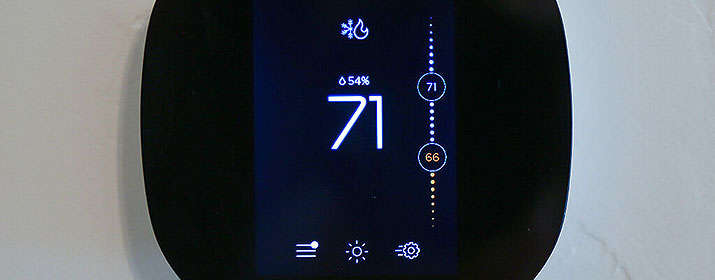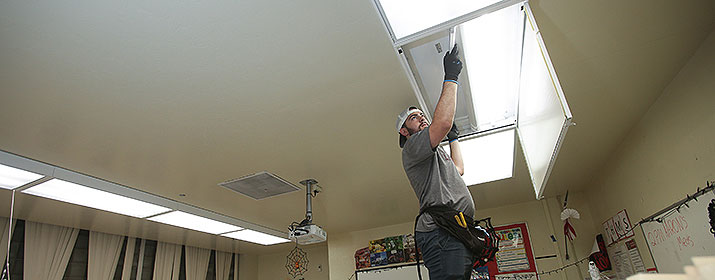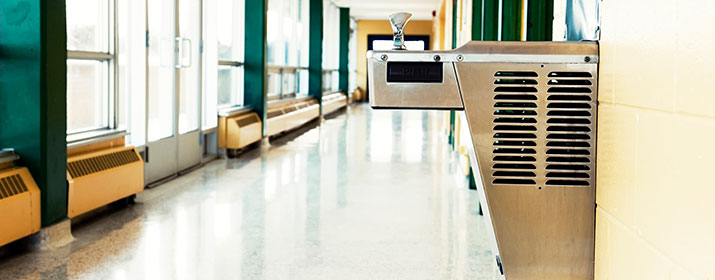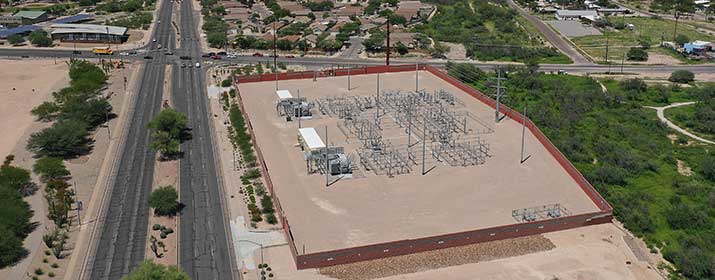
Advanced thermostats have numerous settings that you can use to optimize your energy efficiency. You just need to know about these features to use them.
While all thermostats are different and offer various features, Tucson Electric Power suggests some settings that add ease and convenience and can help you dial down your heating and cooling costs.
1. Voice control
Connect your thermostat to a home assistant if you’re looking for greater convenience in adjusting your thermostat settings without having to use your smart phone app. Amazon Eco, Google Home and other home hubs allow you to control many models of smart thermostat with voice commands.
2. Use Sunblock
Thermostats that get direct sunlight often misread the actual room temperature, causing your air conditioning to crank up or the heat to dial down because of false readings. Some models, such as the Nest Learning thermostat, have a Sunblock setting that lets you tell your thermostat it is in direct sunlight and reading radiant heat. Simply go to settings and toggle it on.
3. Geofencing for irregular schedules
If your family’s schedule changes frequently, your smart thermostat will never quite learn it right, and you’ll need to constantly adjust or reprogram your cooling or heating schedule.
One way around this is geofencing. This uses your smart phone to communicate your location with your thermostat using a geofence – an imaginary radius around your home. When you’re home, your thermostat adheres to your preferred schedule. When you’re outside the radius, the thermostat goes into eco or away mode so that you’re not heating or cooling an empty home.
Nest has the most sophisticated geofencing feature that supports multiple accounts for each member of your household and can track all of them. Family Accounts let up to 10 people access the Nest thermostat in your home using the smart phone app with their own Nest accounts. When the last person leaves, it goes into “away” mode. When the first person comes back, it goes back into “home” mode. Just note that geofencing doesn’t work for family members who don’t have a smart phone or cellular service.
4. Filter change reminders
We all get busy, and it can be hard to remember to change the filter on your AC unit when it’s time. Some smart thermostats, like the Nest, have built-in reminder settings that alert you when it’s time to change the filter, depending on how much you use your AC.
“Dirty and clogged filters make your AC system work harder so that it uses more energy, increasing your energy bill. By changing the filter when it’s needed, you can save money and extend the life of your AC unit,” said Tammy McKay, Senior Energy Efficiency Program Manager for Tucson Electric Power. “Reminders are a nice feature to have on your thermostat.”
5. Equipment failure notifications
Some thermostats offer a setting that notifies you when the AC or furnace isn’t working right or breaks down. For example, if your AC runs but isn’t cooling, your thermostat will email or text you a notice or display a message on the face of the thermostat.
Some models can even diagnose the potential problem, tell you when your system is offline (due to a power outage) and help you troubleshoot. Knowing when something is wrong prevents you from wasting energy if your system isn’t working right and allows you to schedule repairs right away.
6. Pre-programmed Time-of-Use setting
Some thermostats, such as ecobee, have pre-programmed settings that align with the on-peak and off-peak hours in TEP’s time-of-use (TOU) pricing plans. ecobee’s eco+ TOU feature automatically reduces cooling and heating during our on-peak hours to help reduce your bills.
“Programming your thermostat for TOU hours takes time,” said McKay. “Using the pre-programmed TOU features adds ease during set up. We recommend that you verify the schedule is accurate to your situation and make adjustments if necessary.”
Preset TOU schedules help ensure the AC isn’t running during the hottest part of the day during on-peak times. Another convenient feature is that your thermostat will automatically change to new seasonal TOU hours when they begin.
7. Unhealthy air alert
Some of the more intelligent thermostats will let you know when the air you’re breathing is unhealthy. If the thermostat detects dust, mold or other indoor pollutants, it will notify you via text message or email. To use this feature, you’d need to have your thermostat connected to an air filtration or purification system. Check with your HVAC professional to see if this is possible with your system and thermostat.
8. Remote sensors
If you have rooms that are too hot or too cold, a wireless remote sensor might be the solution. Some smart thermostats can be paired with remote sensors that can monitor the temperature and make adjustments to improve comfort in rooms where you spend more time. Some sensors even use motion detection to provide greater comfort in occupied rooms as you move around your home.
9. Vacation mode
Some homeowners make the mistake of turning off their thermostat when they’re headed out for vacation. Your systems should still run minimally while you’re gone to prevent excess heat, cold or humidity in your home.
Many models offer a vacation mode, which tells your thermostat you’ll be away and kicks back your settings. Of course, if you have a smart thermostat that uses your location to set the thermostat, it will automatically go into “away” mode when you’re out of range.
10. Energy reports
While TEP’s mobile app provides customers with their monthly energy usage, some thermostats – like Nest and Honeywell Home – also provide monthly energy reports showing your cooling and heating patterns.
Nest will show you how much energy you saved in “leafs” and how well you ranked among your other Nest neighbors. Honeywell’s reports allow you to analyze your energy usage so that you can make adjustments. It’s well worth paying attention to these reports to manage your energy use.
“If you already have a smart thermostat, it’s worth the time to explore the available settings and features,” McKay said. “If you’re thinking of buying an advanced thermostat, make sure you do your research on available features and that the model you want is compatible with your heating and cooling system before purchasing it. Some offer basic settings while others offer a wide range of convenient and energy-saving features.”






